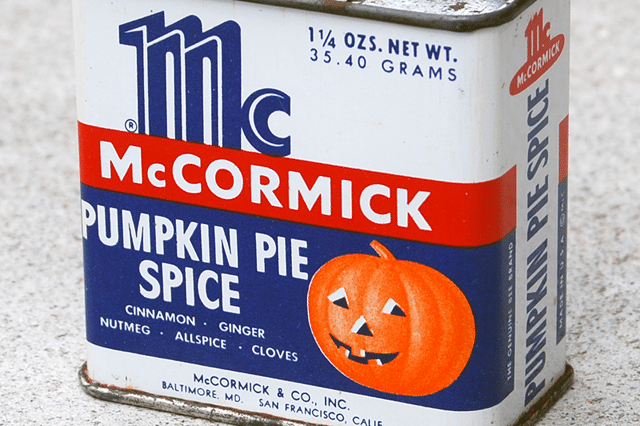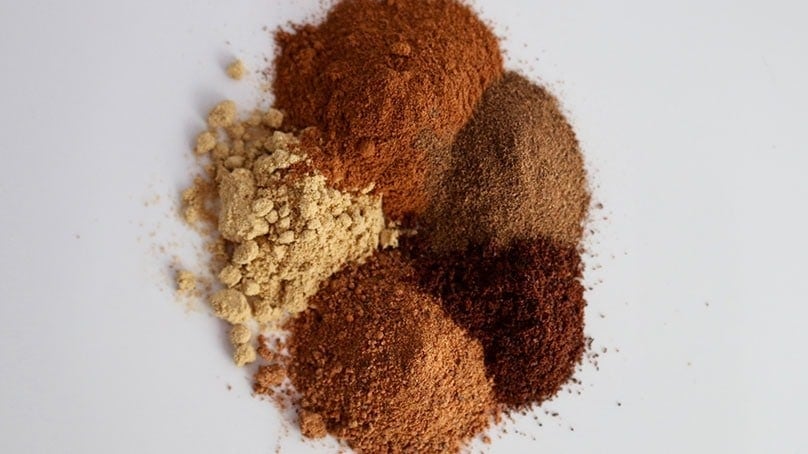Blog, Mocca Shots
Where Did Pumpkin Spice Come From?
The smell and taste of pumpkin pie in unmistakable, and until recently a completely unavoidable part of fall. Everything has been pumpkin-spicified (including our own pumpkin spice Mocca Shots).
Where does it come from, what is it made of and are there any benefits to indulging in that pumpkin spice latte?
Pumpkin spice isn’t a singular spice but rather a combination of the spices including: Cinnamon, Nutmeg, Ginger, Cloves, and Allspice. During the heyday of spice trading, these spices were important for flavoring and preserving meats, fruits, and vegetables. Since fall is the season of harvests, these spices are deeply rooted in cooking at this time of year since colonists preserved and baked with these spices to preserve food for the winter. Moreover, pumpkins are plentiful in North America in the fall.
Pumpkin spice as a product didn’t become popular until 50 years ago when McCormick began selling their blend of these spices which they dubbed “Pumpkin Spice.” This is how we have been baking pumpkin pies now for half a century!

And of course, love it or hate it, the introduction of the Pumpkin Spice Latte by Starbucks has launched a huge market for this flavor in recent years. As of 2016, the market for pumpkin spice products grew to over $500 million!
What are the health benefits?
Cinnamon
Cinnamon acts as an antioxidant and anti-inflammatory. It can help control blood sugar, and aid in digestion.
Nutmeg
Nutmeg is another great antioxidant and is packed with minerals and B-vitamins. It has been shown to relieve pain, promote digestion and helps to detoxify the body.
Ginger
Ginger is a powerful antioxidant and anti-inflammatory. It has been shown to aid digestion and prevent nausia, and reduce muscle pain and soreness. In addition, ginger could help lower the risk of cancer. We chose this as an ingredient in Energon Recover for a reason. Learn more about the benefits of ginger it in our blog.
Cloves
Cloves are a great source of fiber, are packed with vitamins and minerals and antioxidants.
Allspice
Another anti-inflammatory and antioxidant that boosts the immune system, aids digestion, and helps with circulation.
References
Black, C D, and P J O’Connor. “Acute Effects of Dietary Ginger on Muscle Pain Induced by Eccentric Exercise.” Phytotherapy Research : PTR., U.S. National Library of Medicine, Nov. 2010, www.ncbi.nlm.nih.gov/pubmed/21031618.
Cox, Savannah. “A Brief History of How Pumpkin Spice Took over Our Lives.” Business Insider, Business Insider, 12 Oct. 2016, www.businessinsider.com/how-pumpkin-spice-took-over-fall-2016-10.
D’Costa, Krystal. “The Rise of Pumpkin Spice.” Scientific American Blog Network, 20 Sept. 2017, blogs.scientificamerican.com/anthropology-in-practice/the-rise-of-pumpkin-spice/.
Hlebowicz, et al. “Effect of Cinnamon on Postprandial Blood Glucose, Gastric Emptying, and Satiety in Healthy Subjects | The American Journal of Clinical Nutrition | Oxford Academic.” OUP Academic, Oxford University Press, 1 June 2007, academic.oup.com/ajcn/article/85/6/1552/4632985.
Mancini-Filho, J. “Faculdade De Ciências Farmacêuticas, Depto. De Alimentos e Nutrição Experimental, São Paulo, Brasil.” Bollettino Chimico Farmaceutico, 1 Dec. 1998, europepmc.org/abstract/med/10077878.
P., G. “Some Aspects of Dioecism in Pimento (Allspice) | Annals of Botany | Oxford Academic.” OUP Academic, Oxford University Press, 1 July 1964, academic.oup.com/aob/article-abstract/28/3/451/125401.
Pham, Antony Q., et al. “Cinnamon Supplementation in Patients with Type 2 Diabetes Mellitus.” Pharmacotherapy: The Journal of Human Pharmacology and Drug Therapy, Wiley-Blackwell, 6 Jan. 2012, onlinelibrary.wiley.com/doi/abs/10.1592/phco.27.4.595.
“PPARα Mediates the Hepatoprotective Effects of Nutmeg.” Journal of Proteome Research, pubs.acs.org/doi/10.1021/acs.jproteome.7b00901.
Ryan, J L, et al. “Ginger (Zingiber Officinale) Reduces Acute Chemotherapy-Induced Nausea: a URCC CCOP Study of 576 Patients.” Supportive Care in Cancer : Official Journal of the Multinational Association of Supportive Care in Cancer., U.S. National Library of Medicine, July 2012, www.ncbi.nlm.nih.gov/pubmed/21818642/.
SHELEF, L. A., et al. “SENSITIVITY OF SOME COMMON FOOD‐BORNE BACTERIA TO THE SPICES SAGE, ROSEMARY, AND ALLSPICE.” Journal of Food Science, Wiley/Blackwell (10.1111), 25 Aug. 2006, onlinelibrary.wiley.com/doi/abs/10.1111/j.1365-2621.1980.tb07508.x.
Zhang, Lei, and Bal L. Lokeshwar. Current Drug Targets, U.S. National Library of Medicine, Dec. 2012, www.ncbi.nlm.nih.gov/pmc/articles/PMC3891794/.

